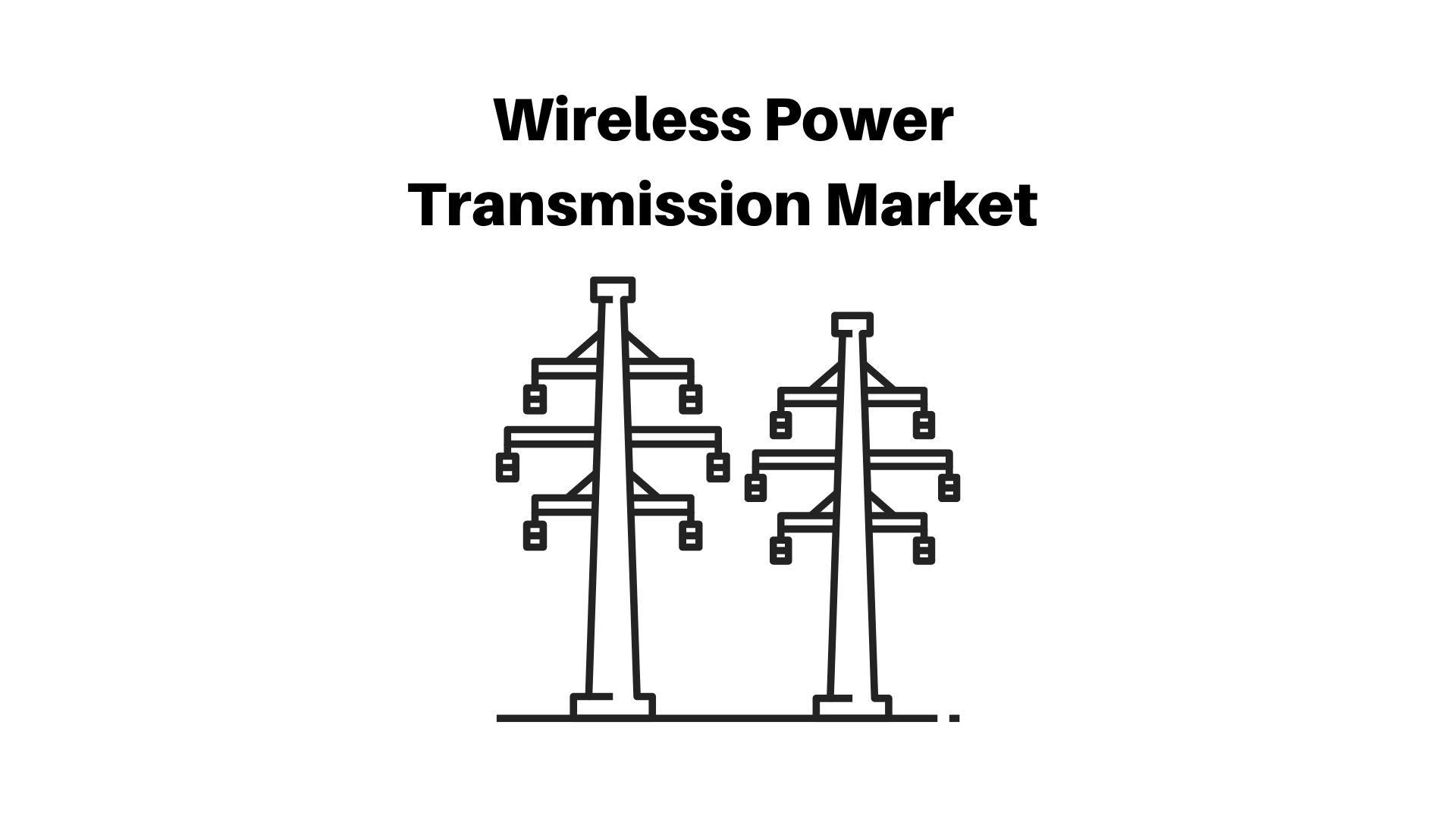Wireless Power Transmission System Market is expected to be worth around USD 55.2 Bn by 2032

Page Contents
Market Overview
Published Via 11Press: The Wireless Power Transmission System Market size is expected to be worth around USD 55.2 Bn by 2032 from USD 8.4 Bn in 2022, growing at a CAGR of 21.3% during the forecast period from 2022 to 2032.
The wireless power transmission system market is a rapidly developing sector of the energy industry with immense potential for further expansion in the coming years. Wireless power transmission systems enable energy transfer from one location to another without using physical cables or wires, eliminating physical obstructions like cables.
One of the primary drivers of the wireless power transmission system market is an increase in demand for mobile devices such as smartphones, tablets, and wearables. These require frequent charging and the convenience of wireless charging technology has become more widespread due to its convenience and ease of use.
Another factor driving the market is the rising adoption of electric vehicles (EVs). Wireless charging systems for EVs offer a convenient and efficient way to charge cars without needing physical connections.
Furthermore, the growing demand for renewable energy sources such as solar and wind power is expected to fuel growth in the wireless power transmission system market. These renewable resources often reside in remote places where it may be difficult or expensive to install traditional power transmission systems, making these sources of energy particularly attractive.
The market for wireless power transmission systems consists of various technologies such as radio frequency (RF) energy harvesting, magnetic resonance, and electromagnetic induction. RF energy harvesting is the most commonly employed option due to its compatibility with various devices and ability to cover both short-range and long-range transmission of electrical energy.
Request For Sample Report Here: https://market.us/report/wireless-power-transmission-system-market/request-sample/

Key Takeaways
- Increasing Demand for Wireless Charging Solutions: The demand for wireless charging solutions is on the rise, driven by the increased usage of mobile devices, electric vehicles, and industrial equipment. The convenience and efficiency that wireless charging technology offers, as well as its potential to reduce energy losses, are major factors behind this trend.
- Advancements in Wireless Power Transmission Technology: The advent of long-range wireless power transmission and wireless charging for industrial equipment has created new market opportunities. These developments are expected to boost the efficiency and effectiveness of wireless power transmission, spurring further growth within this sector.
- Growing Adoption of Electric Vehicles: As electric vehicle adoption continues to rise, so too does the demand for wireless charging solutions. Wireless EV charging offers a convenient and efficient way to charge vehicles without physical connections – something especially helpful in public charging stations or other high-traffic areas.
- Increased Efficiency and Lower Energy Losses: Wireless power transmission systems promise to boost efficiency and cut energy losses, leading to cost savings for both consumers and businesses alike. This is particularly relevant in industries like manufacturing and logistics where efficiency and cost reductions are essential elements.
- Geographic and Market Segmentation: The wireless power transmission system market can be divided geographically, by technology, application, and end-user. This segmentation gives insights into specific trends and drivers across different regions and industries. North America and Europe are currently the two largest markets for these systems while Asia-Pacific is expected to experience rapid growth over the coming years. RF energy harvesting is currently the most widely used technology within this space with applications across consumer electronics, healthcare, and automotive.
Regional Analysis
- North America is currently the largest market for wireless power transmission systems due to the high adoption of mobile devices, electric vehicles, and renewable energy sources. The United States and Canada are major contributors to this region's market share.
- Europe is an important market for wireless power transmission systems due to the growing adoption of electric vehicles and the presence of major players in this region. The United Kingdom, Germany, and France are leading contributors to this market.
- Asia-Pacific is predicted to be the fastest-growing region for the wireless power transmission system market due to the increasing adoption of mobile devices and electric vehicles there. China, Japan, and South Korea are the major contributors to this region's market share.
- The Middle East & Africa region is expected to witness significant growth in the wireless power transmission system market due to the increasing adoption of renewable energy sources and an increasing need for wireless charging solutions. Major contributors in this region include Saudi Arabia, UAE, and South Africa.
- The Latin America region is expected to experience growth in the wireless power transmission system market due to the increasing adoption of electric vehicles and the presence of major players in this region. Brazil, Mexico, and Argentina are leading contributors to this market.
- Finally, the wireless power transmission system market is expected to expand significantly across all regions, with Asia-Pacific experiencing the fastest growth due to the increasing adoption of mobile devices and electric vehicles.
Browse the summary of the report and Complete the Table of Contents (TOC)
Drivers
- The rising adoption of mobile devices such as smartphones, tablets, and wearables has driven up demand for wireless charging technology which offers greater convenience and user-friendliness compared to traditional wired charging methods. Rising Demand for Electric Vehicles, As electric vehicle adoption continues to rise, wireless charging systems for EVs offer a convenient and efficient way to charge their batteries without the need for physical connections.
- Growing demand for renewable energy sources, The rising popularity of renewable sources such as solar and wind power is expected to propel growth in the wireless power transmission system market since these resources are often located in remote places where traditional power transmission systems may be difficult or expensive to install.
- Increased Efficiency and Energy Savings, Wireless power transmission systems promise to boost efficiency and cut energy losses, leading to cost savings for both consumers and businesses alike. Development of New Technologies, The development of novel wireless power transmissions technologies, such as long-range transmission and wireless charging for industrial equipment, is expected to create new opportunities in the market and fuel further growth.
Restraints
- High Implementation Costs: Wireless power transmission systems may have high initial implementation costs, which may deter some businesses and consumers from adopting the technology. Nonetheless, it's essential to remember that costs for wireless power transmission technology are decreasing steadily as more users adopt it.
- Compatibility Issues: Wireless power transmission systems can have compatibility issues, as different devices may require different wireless charging standards and protocols. This creates confusion and limits the interoperability of wireless charging solutions.
- Limited Range and Power Output: Wireless power transmission systems often have limited range and output, making them inflexible for certain applications. For instance, long-range wireless power transmission may necessitate significant infrastructure investments to implement.
- Safety Issues: Wireless power transmission systems can present safety risks if not designed and implemented properly. There is the potential for electromagnetic interference with other devices, as well as overheating or other electrical hazards.
- Regulatory Challenges: Regulating wireless power transmission systems may present a challenge. Different countries and regions may have different regulations and standards for wireless charging, creating barriers to entry and restricting the potential market size.
Opportunities
- Increasing Demand for Smart Homes and Cities: With the increasing interest in smart homes and cities, wireless power transmission systems have an opportunity to be integrated into these environments. Wireless power transmission can provide power to a variety of devices, sensors, and other smart infrastructure without the need for physical connections.
- Advances in Wireless Power Transmission Technology: As wireless power transmission technology continues to develop, there will be opportunities for creative and innovative applications of this emerging technology. For instance, long-range wireless energy transmission could be employed for running devices in remote locations or creating wireless charging networks for electric vehicles.
- Growing Demand for Renewable Energy: The growing need for renewable energy sources presents an opportunity for wireless power transmission systems to transport power from these sources to end-users. Wireless transmission can offer a more efficient and economical method of sending electrical energy from remote places, like offshore wind farms or solar power plants.
- Increased Adoption of IoT Devices: With the growing popularity of IoT devices comes an opportunity for wireless power transmission systems to be utilized as a source for powering these gadgets. This can reduce reliance on batteries and other power sources, providing a more convenient and efficient method to power these IoT gadgets.
- Emerging Markets: Emerging markets offer wireless power transmission systems a chance to be adopted in areas where traditional power systems may not exist or may be too expensive to install. This includes rural areas, developing countries, and areas affected by natural disasters or disruptions to traditional power infrastructure.
Challenges
- Standardization: The lack of standardization in wireless power transmission technology poses a major obstacle for the market. Currently, several different wireless charging standards and protocols exist, potentially creating compatibility issues and restricting interoperability between solutions.
- Power Efficiency: Wireless power transmission systems may not be as energy-efficient as traditional wired power systems, leading to increased energy losses, reduced efficiency levels, and higher costs.
- Safety Issues: Wireless power transmission systems can present safety risks if not properly designed and implemented. Electromagnetic interference with other devices and potential electrical hazards are significant safety hazards to consider.
- Distance Restrictions: Wireless power transmission systems have distance limitations, which may make them unsuitable for certain applications. Long-range wireless power transmission may necessitate substantial infrastructure and investment to implement.
- Initial implementation costs: The upfront costs associated with wireless power transmission systems can be high, which may deter some businesses and consumers from adopting the technology.
- Lack of Awareness and Education: Many businesses and consumers may not be aware of the advantages or potential applications of wireless power transmission systems. To promote the adoption and usage of this technology, education, and awareness campaigns may be necessary.
- Regulatory Challenges: Different countries, and regions may have different regulations and standards for wireless charging, creating barriers to entry and restricting potential market size. Complying with regulatory requirements can be a significant hurdle for businesses operating across multiple markets.
Report Scope
| Report Attribute | Details |
| The market size value in 2022 | USD 8.4 Bn |
| Revenue forecast by 2032 | USD 55.2 Bn |
| Growth Rate | CAGR Of 21.3% |
| Regions Covered | North America, Europe, Asia Pacific, Latin America, and Middle East & Africa, and the Rest of the World |
| Historical Years | 2017-2022 |
| Base Year | 2022 |
| Estimated Year | 2023 |
| Short-Term Projection Year | 2028 |
| Long-Term Projected Year | 2032 |
Key Market Segments
Type
- By Technology
- Inductive Coupling
- Resonant Inductive Coupling
- Capacitive Coupling
- Others
- By Range
- Near Field
- Far Field
Application
- Consumer Electronics
- Healthcare
- Automotive
- Industrial
- Others
Key Market Players included in the report:
- Qualcomm
- Samsung Electronics
- TDK Corporation
- Texas Instruments
- Nucurrent
- Powermat Technologies
- Powerbyproxi
- Witricity Corporation
- Convenientpower Hk,
- Salcomp
- Leggett & Platt
- Energizer Holdings
- Murata Manufacturing
- LG Electronics Inc
- Texzon Technologies
Frequently Asked Questions
What is the market study period?
The Touchscreen Display Market is studied from 2017 – 2032.
What is the growth rate for the Touchscreen Display Market?
The Touchscreen Display Market is growing at a CAGR of 21.3%
Who are the major players in the Touchscreen Display Market?
Qualcomm, Samsung Electronics, TDK Corporation, Texas Instruments, Nucurrent, Powermat Technologies, Powerbyproxi, Witricity Corporation, Convenientpower Hk, Salcomp, Leggett & Platt, Energizer Holdings, Murata Manufacturing, LG Electronics Inc, Texzon Technologies
The team behind market.us, marketresearch.biz, market.biz and more. Our purpose is to keep our customers ahead of the game with regard to the markets. They may fluctuate up or down, but we will help you to stay ahead of the curve in these market fluctuations. Our consistent growth and ability to deliver in-depth analyses and market insight has engaged genuine market players. They have faith in us to offer the data and information they require to make balanced and decisive marketing decisions.



